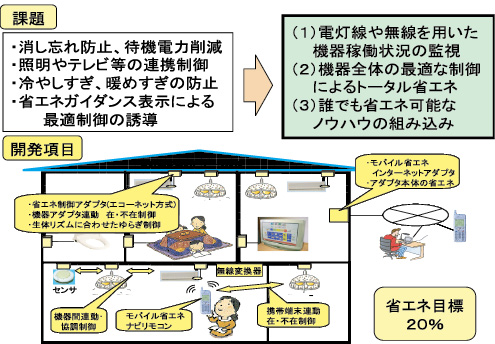
As of August, 2015
| Faculty/Department | Department of Mechanical Engineering and Intelligent Systems Graduate School of Informatics and Engineering |
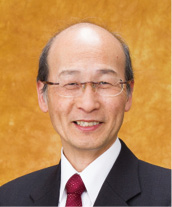
|
| Members | Seiichi Shin, Professor Kenji Sawada, Associate Professor |
|
| Affiliations | Society of Instrument and Control Engineers, Japan Society of Mechanical Engineers, Institute of Electrical Engineers of Japan, Japan Society for Industrial and Applied Mathematics, Institute of Electrical and Electronics Engineers (IEEE) | |
| Website | http://www.sawada.iperc.uec.ac.jp/ | |
Wavelet analysis, autonomous distributed systems, electronic control engineering, software engineering, visualization of sound, visualization of software, monozukuri manufacturing
Our laboratory pursues research of model-based instrumentation and control which measure the state of objects and drive them based on the measurements.
Our major research themes include (1) electronic control; (2) wavelet analysis; (3) autonomous distributed systems for information appliances; and (4) software engineering.
These days, we encounter electronic controls in manufacturing systems, cell phones, and home appliances, making this research area one closely intertwined with our daily lives. This technology is essential to automobiles: Cars incorporate electronic controls to maximize efficiency, power, safety, and environmental performance to an extent well beyond the capability of mechanical controls. Electronic controls are used in a wide range of automotive systems, including engines, brakes, and transmissions. We use mathematical models to identify solutions that produce the performance required.
The goal of our laboratory is not simply to find practical applications for our theoretical work, but to formulate theories that promise the potential for practical applications.
Our joint research with private sectors in this area has already produced results. Practical applications of wavelet analysis achieved to date include system identification and estimation, anomaly detection, signal processing, and even the visualization of sound. Wavelet analysis can be used for estimation and detection in cases beyond the capabilities of conventional spectral analysis.
Our current research seeks to find optimal ways to integrate electronic devices into the various environments and cycles people encounter in their daily lives. Our goal is to introduce technologies that help protect the global environment-for example, by enabling autonomous communication between information appliances, thereby allowing appliances to work in coordination to minimize power consumption throughout the household. Each appliance would transmit data to a wireless ubiquitous network while in turn receiving information on other appliances, thereby allowing it to schedule its functions optimally. Since information and controls are distributed over the network and not concentrated in a single device, such a network allows flexible and adaptable response when new appliances are added to the network, a key feature.
The size and footprint of commercial software applications are expanding exponentially. A typical OS these days may consist of tens of millions of lines, while the software associated with electronic controls can easily consist of several hundred thousand lines. These gigantic programs support our daily lives and safety. Based on an understanding of the growing need to achieve a deeper theoretical understanding of and to create environments for the development of safe software, we have defined as one of our research themes the standardization of distributed objects and analysis of completed software, mainly with Object Management Group (OMG). For example, we can facilitate the process of validating complex software by creating mathematical models that allow visualization. Additionally, by taking a scientific and mathematical approach in the validation process, we can take the analysis of the visualized software one step beyond what can be achieved by simply viewing the visualized result. Based on work on these research themes, our laboratory seeks to investigate instrumentation and control technologies from various perspectives and explore paths to find practical applications.
Our laboratory has successfully commercialized our instrumentation and control technologies through joint research projects with the private sector and organizations across various fields, including automobile manufacturers, part manufacturers, home appliance manufacturers, and computer manufacturers, all of whom play a vital role in the Japanese economy. We are feeding back the expertise and knowledge gained through these achievements into our pursuit of monozukuri manufacturing that focuses not just on one-way presentations of research from academia, but on mutual contributions and integration of our technologies with those of industry. This approach has made it possible for us to pursue research on feasible technologies that meet the demands of specific industries.
We are also working to build a system that will collectively control human and machine work flow using XML, which is capable of combining human-readable information with information on computers, thereby providing access to documented information to everyone, as well as access to information on manufacturing line flows. Together with the Japan Electronics and Information Technology Industries Association (an ISO council of Japan), and the Manufacturing Science and Technology Center, we are currently making a proposal to the international community to bring about changes in the industry by establishing an XML promotion conference and the development of RFID tags.
Our daily lives are made richer by instrumentation and control technologies in our surroundings that employ computerized control. Examples include safety control systems in automobiles, microprocessors in home appliances like air conditioners and rice cookers, the microprocessors in our cell phones, lifeline control systems in the event of earthquakes and other disasters, and even in supply and manufacturing line management of fabrics used for making bags and clothes. Electronic devices support our lives, and the explosion and diversification of IT information and the constantly falling cost of computers fuel expectations for microcomputers that are even cheaper and more powerful.
The information control technologies in computers are built upon a theoretical method of thinking using mathematics. Our laboratory takes this a step further by transforming the theories in our head into practical applications based on data obtained from instrumentation and control technologies-by turning the technologies in our imagination into real and practical technologies that benefit society. Ultimately, this should allow us to create useful products that improve the safety, security, and environmental impact of our society. Japan boasts sophisticated computerized control technologies and has been a forerunner in providing the world with products of superior quality. The improvements in microprocessor performance just alluded to will make it possible to design and create computers capable of executing actions based on more accurate estimates, behavior approaching what we would expect from actual human thought processes.

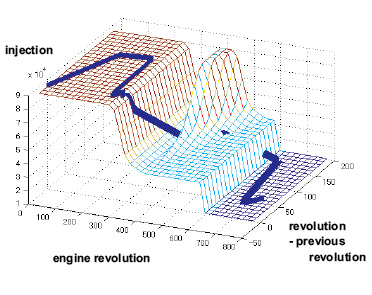
In addition to continuing to pursue our present research themes, we also plan to work on developing a system that establish standards for software distributed by various manufacturers to make such software more effective and to expand their applications, such as robots equipped with uninterrupted control functions and efficient, autonomous decision-making functions. We will also work with the Ministry of Land, Infrastructure, Transport and Tourism and other government agencies in fields of study to apply computing the energy efficiency of sewage systems, dams, and other such public facilities.
We hope to produce systems that reduce environmental impact and offer safety, security, and energy efficiency in various fields.
